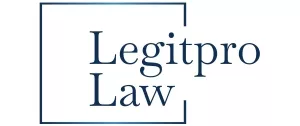- within Technology topic(s)
- with Finance and Tax Executives
- in United States
- with readers working within the Law Firm industries
INTRODUCTION
The ongoing deployment of the Artificial Intelligence (AI) and Natural Language Processing (NLP) including GPT-5, Claude and PaLM 2 models have caught public's eye for their capability in automating complex functions. These extensive models are built on parameter counts spanning from billions to trillions to exhibit ability for comprehending human-like texts and generate creative solutions to intricate problems.
While these Large Language Models (LLMs) continue to dominate the industry, the market is now seeing the emergence of smaller advanced models, known as Small Language Models (SLMs), inclined towards solving domain-specific legal problems. As the discussion around SLMs continue to gain momentum, it becomes crucial to understand its influence on legal operations beyond the technical lens.
WHAT AN SLM IS
Unlike LLMs like GPT-5 whose efficiency is dependent on advanced hardware and vast training dataset, SLMs are optimized to deliver efficiency for leaner operations on compact cloud system. For attorneys, such compact sized SLMs open door for faster, cheaper and more task-specific legal model that provides multi-step legal reasoning in constitutional interpretation, risk analysis and assessment.
Large scale models like GPT and Claude are developed on billion parameters while SLMs are purpose-built models, engineered to utilize fewer parameters for lighter and faster usage. By employing techniques such as quantization, pruning, and knowledge distillation, the model size is minimized to preserve performance. Further, the model leverages fewer parameters to deliver faster results with limited computer resources.
The economic efficiency of SLMs is relatively better as they can be trained on smaller and legal specific datasets. Further, law firms can customise and adapt the model to their specific operations with fewer computational cost in contrast to typically spending millions on API fees. Because SLMs are trained on smaller datasets, the model can be fine-tuned to perform efficiently in niche areas. This provides more flexibility in customising and adapting the model suitable for specific business use1.
THE SLM SOLUTION FRAMEWORK
- Data governance and confidentiality
Why it matters: Legal teams handle critical data on a daily basis and maintaining data confidentiality is the prime concern.
SLM Advantage: SLM run offline and behind the company's firewall, ensuring that the sensitive data is kept safe. Essentially, the models don't require data centres to store documents, thereby, there are less chances of data risk breaches.
- Accuracy and hallucination risk
Why it matters: Recently, a lawyer was fined by the US court for citing fake legal cases. The lawyer pleaded in his defence that he assumed that an AI program would not fabricate case laws entirely2.
SLM Advantage: The model can be fine-tuned on local firm data since the deployment is done behind the firm's firewall. This lowers down the hallucination risk with more accurate results.
- Operational cost and predictability
Why it matters: Huge amount of money goes into paying API fees for volume intensive training of the model.
SLM Advantage: SLMs require smaller dataset training which reduces the operational cost and more resilience on cost analysis. The model is more cost effective, both on deployment and to run for firms that don't have Silicon Valley-sized tech budget, thereby allowing wider adoption across the industry3.
- Iteration speed
Why it matters: Model iteration is crucial when there are regulatory changes or adaption is required to accommodate client needs.
SLM Advantage: SLMs can be easily fine-tuned to the domain-specific datasets, making them ideal for customising as per the company or client needs. Especially, because of lower costs involved in tuning the model, SLMs are preferred over LLMs.
PRACTICAL USE CASES: WHERE GCS WILL SEE IMPACT
Companies can train and further fine-tune their SLMs over their own clause library and annotated contracts to customise the model to produce enterprise driven output. Contract review process is enhanced as clause extraction and risk flagging would be prioritized as per enterprise needs. Further, it would allow to build model architecture with more depth and context retention, making way for handling complex reasoning.
One of the biggest fear companies faces is the data leak on deployment in third-party sites. However, with SLMs, the deployment is done within the secured company firewalls without the need for exporting documents on third party sites. This reduces the exposure of vendor contracts and confidentiality of client data is maintained. Even, the European regulators have emphasized on the smart deployment of SLMs on secured environment. The European Data Protection Board recognized that local use of SLMs can mitigate privacy concerns and conform compliance with GDPR requirements4.
Moreover, since the model is trained on smaller datasets, it becomes easy to fine-tune the model to the regulatory changes and adhere to such policies so that the deviations are effectively flagged by the model when compliance check is required. Internal teams can rely on such models for faster action and reduction in human review.
GC PLAYBOOK: STEPS TO A PRAGMATIC PILOT
- Prioritise scope: Select the workflow that requires automation and is characterized by significant volume dataset and involves heightened privacy concerns. For instance, reviewing contracts, managing contract lifecycle or e-discovery triage that requires automation.
- Annotation of data: For the purpose of training the model, the data has to be anonymized by removing all personally identifiable information (PII). This maintains individual confidentiality as well as the data can be used for building customized SLM.
- Shortlisting SLMs: Legal teams can identify and assess the best available SLMs in the market from open sources or trusted vendors and test them against the annotated legal documents. Clause extraction, risk flagging and classification, consistency and hallucination rate, and data privacy and deployment control are the key considerations when selecting a model.
- Human-in-loop: Model outputs should be flagged based on feedback received from the review team. Basis of the review, the model can be tweaked and fine-tuned for accuracy and improvements. Here, human interference would be proven critical in validating the output produced by the model.
- Escalation rules: Teams should proactively establish escalation framework that specifies the tasks to be automated by the SLM and the more complex tasks to be supported by LLM.
A CHANGING SEASON FOR LAWYERS
Legal technology is entering into another phase of intelligence, driven by small, efficient and secure AI. For GCs and legal ops teams, the concern is not which is the most powerful model instead which model would limit the data exposure while improving throughout. SLMs are the new way trend for law firms that need capability without the dependency on cloud storage or high cost. Through the targeted deployment of AI, firms can harness the powerful and privacy-oriented capabilities of SLMs in shaping the future of legal technology.
Footnotes
1 American Bar Association. (2025, June 11). Small Language Models Are Redrawing the Legal Battlefield.
2 PC Gamer. (2025, July 29). Judge sends ChatGPT-using lawyer to AI school with $5,500 fine after he's caught creating imaginary caselaw: 'Any lawyer unaware that using generative AI platforms to do legal research is playing with fire is living in a cloud'.
3 Lexemo. Small Language Models (SLMs) & Legal AI Tools in LegalTech.
4 EDPB.EUROPE.EA. (2025, March). AI Privacy Risks & Mitigations – Large Language Models (LLMs).
The content of this article is intended to provide a general guide to the subject matter. Specialist advice should be sought about your specific circumstances.


